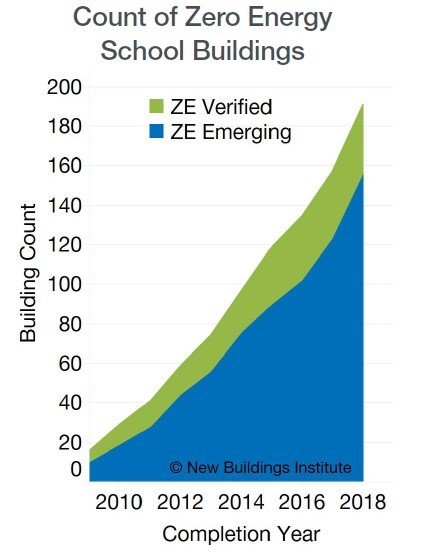Students who stand for climate action can make immediate impact by working for better energy performance and low-carbon outcomes in their own school buildings.
On March 15, an estimated 1.4 million young people from 123 countries did not go to school, but rather rallied to demand stronger climate action to protect the environment for their future. The students are supported by hundreds of scientists, who signed an open letter, saying  their “goal and the need for immediate action is consistent with the most current scientific assessment of the challenge that climate change poses today. The world, including the U.S., is presently on an emissions trajectory that could see the planet warm by well over 3°C within most of their lifetimes. It is still possible to avert this future; but this can only be achieved by reversing our current trend of increasing emissions and decarbonizing the global economy at the pace and urgency of a moon race.”
their “goal and the need for immediate action is consistent with the most current scientific assessment of the challenge that climate change poses today. The world, including the U.S., is presently on an emissions trajectory that could see the planet warm by well over 3°C within most of their lifetimes. It is still possible to avert this future; but this can only be achieved by reversing our current trend of increasing emissions and decarbonizing the global economy at the pace and urgency of a moon race.”
Ironically, the school buildings where these students spend their days offer one of the best opportunities for cutting carbon emissions from the built environment. Buildings account for 39% of carbon globally and leading districts are working now to achieve zero energy (ZE) and even zero carbon performance in their schools. ZE buildings use only as much energy as can be generated by clean, renewable resources, and ZE schools represent the largest segment in this market, showing a remarkable 850% growth since 2010, according to tracking by New Buildings Institute (NBI) and summarized in the recently released 2019 Zero Energy Schools Watchlist for K-12 Schools, Colleges, and Educational Projects.
Districts from San Francisco to Athens, Ohio, to Arlington, Virginia, are looking at policies favoring building efficiency and clean, renewable power supply for new construction and renovation projects. In addition to carbon savings, ZE schools offer  school districts and local jurisdictions a way to save on utility costs and create healthier and more productive learning environments for students and staff. Zero energy educational buildings are feasible today with 191 projects across the United States and Canada working to achieve this standard, according to the NBI Watchlist.
school districts and local jurisdictions a way to save on utility costs and create healthier and more productive learning environments for students and staff. Zero energy educational buildings are feasible today with 191 projects across the United States and Canada working to achieve this standard, according to the NBI Watchlist.
A total of 35 verified and 156 emerging ZE educational buildings are located across 37 states and three Canadian provinces. NBI defines “ZE-verified buildings” as buildings with one full year of energy-use data that shows they are producing at least as much energy as is used. “ZE-emerging buildings” have a publicly stated goal of ZE, but do not yet have one full year of energy-use data. The top five states for zero energy schools are California, Kentucky, Massachusetts, Oregon and Texas, according to the Watchlist.
To assist decision makers and the students working to influence them, NBI has defined five “must haves” to achieve ultra-low energy schools and collected some of the best examples of state and district policies and national programs working toward zero energy schools in the Getting to Zero in Schools Resource Hub. The Hub also contains research resources, feasibility studies, assessment strategies, case studies, and technical resources for zero energy school design. With increasing awareness and pressure to act, we expect more school districts to pursue zero energy and zero carbon in their facilities. We know that there is no planet B, so the work starts now.
